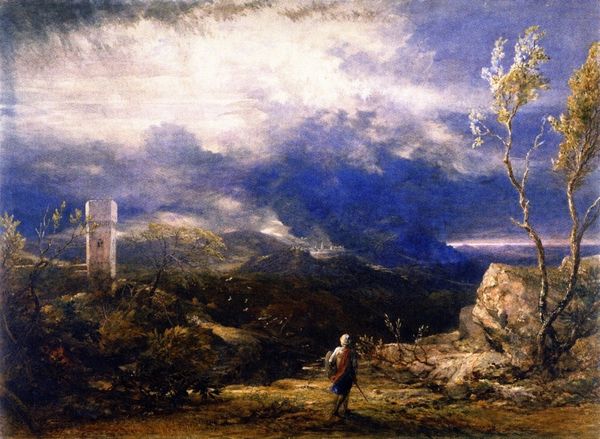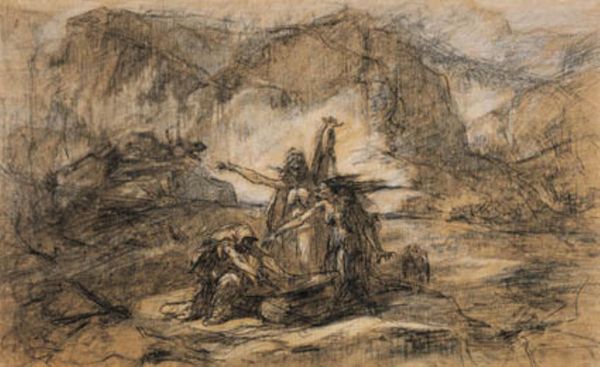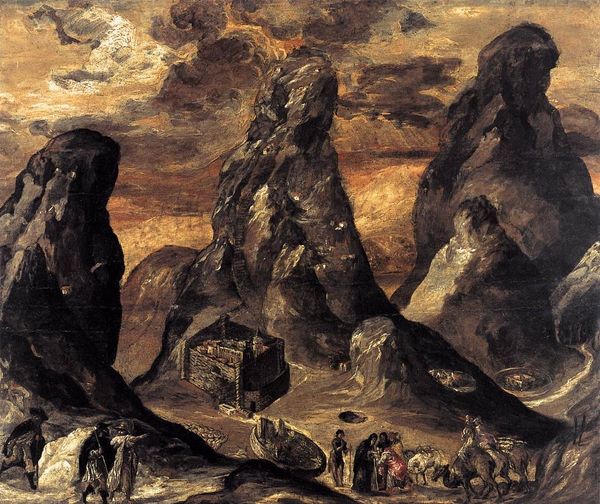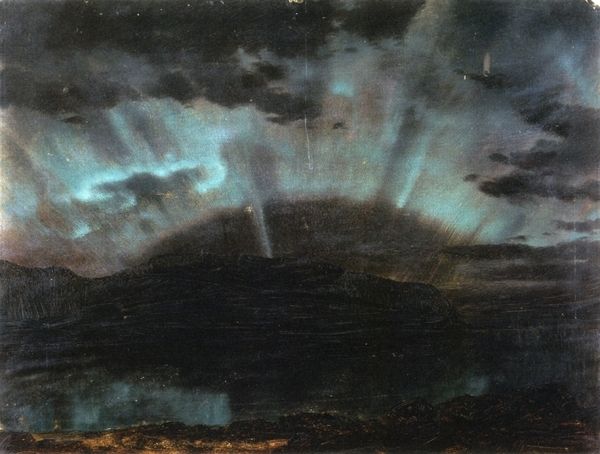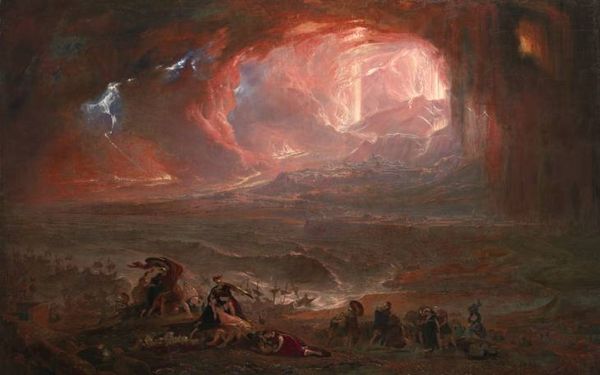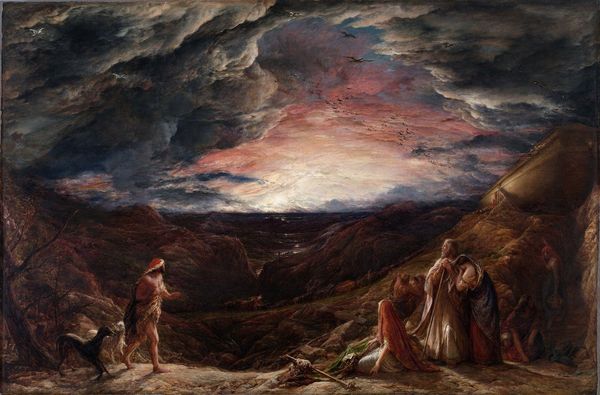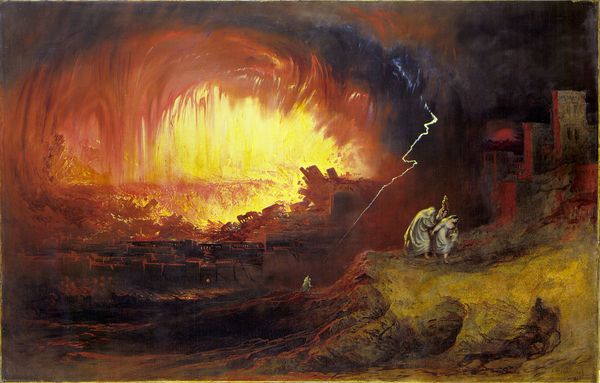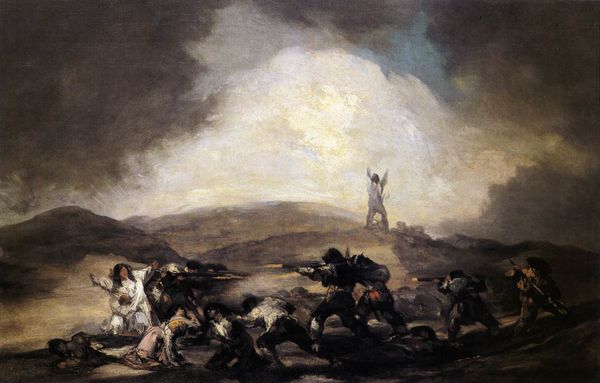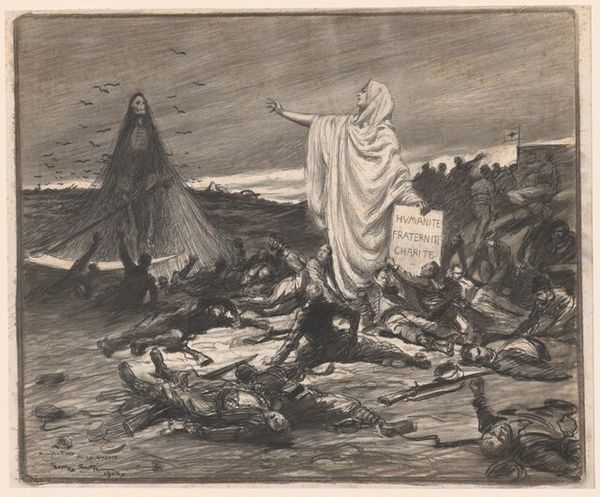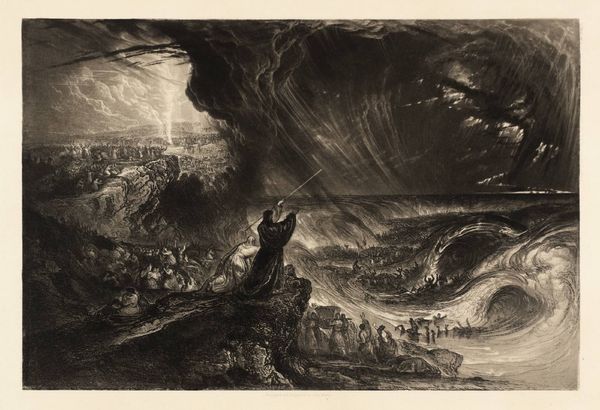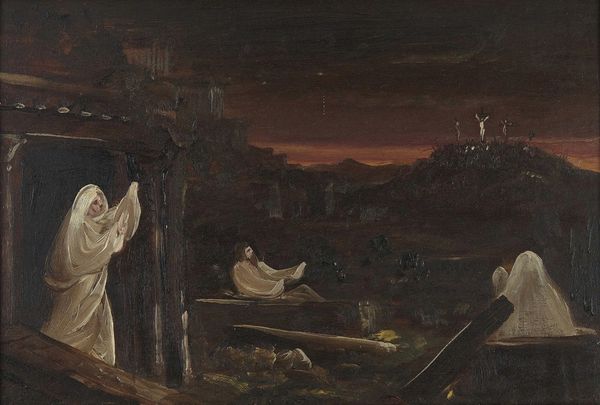
drawing, oil-paint, pencil, charcoal
#
drawing
#
sky
#
oil-paint
#
landscape
#
charcoal drawing
#
oil painting
#
romanticism
#
cloud
#
pencil
#
charcoal
#
watercolor
Dimensions: 38.7 x 59.1 cm
Copyright: Public domain
Curator: This is John Constable’s rendering of Stonehenge, dating from 1835. He primarily used oil paint but also worked with pencil and charcoal to capture this iconic monument. What strikes you first about the piece? Editor: The sheer drama. The dynamism of the composition. The dramatic contrast between light and shadow—it's visually quite powerful. Curator: Absolutely. The Romanticism movement strongly influenced Constable, especially its focus on nature's sublime power. You can feel that in his turbulent sky. Let's consider the medium. Note how he employs drawing techniques in what we typically regard as painting, specifically in oil. The charcoal underdrawing shows through, integrating the different steps in his workflow to arrive at the final product. Editor: The structure itself, Stonehenge, is almost secondary to the weather here, isn't it? It's like the stones are mere actors on a grand stage. Observe how Constable manipulates the weight of the cloud formations, making the dark hues loom ominously above the horizontal plain. It contributes to that Romantic feeling. Curator: Precisely. He captures a fleeting moment in time, yet he is concerned about material culture as well. I wonder, did Constable obtain these pigments himself, or commission it from tradesmen? How were these brushes made? Considering those labor-intensive processes really roots the art into a specific social framework, emphasizing both its value and creation. Editor: It's interesting to ponder the artistic intent. Do you think it's more about documentation or about evoking emotion? The composition isn’t perfectly symmetrical. Some might argue the stones are secondary, more placeholders around the dramatic elements of the cloud cover. I do see that the stones do add grounding to the image, a visual counterweight. Curator: I believe it is both. Constable clearly felt a connection to Stonehenge. The sheer size and age of this site certainly captured his interest as well, since his work considers his role as an artist reflecting these forces. It suggests continuity of artistic engagement between his current creative act and other historical creators. Editor: It's an interplay, then. The artwork functions as both historical artifact, and subjective expression, where the visual construction invites our emotions. It seems appropriate for something so laden with historical mystery as Stonehenge. I see now it evokes a feeling that extends far beyond any accurate visual description.
Comments
No comments
Be the first to comment and join the conversation on the ultimate creative platform.
